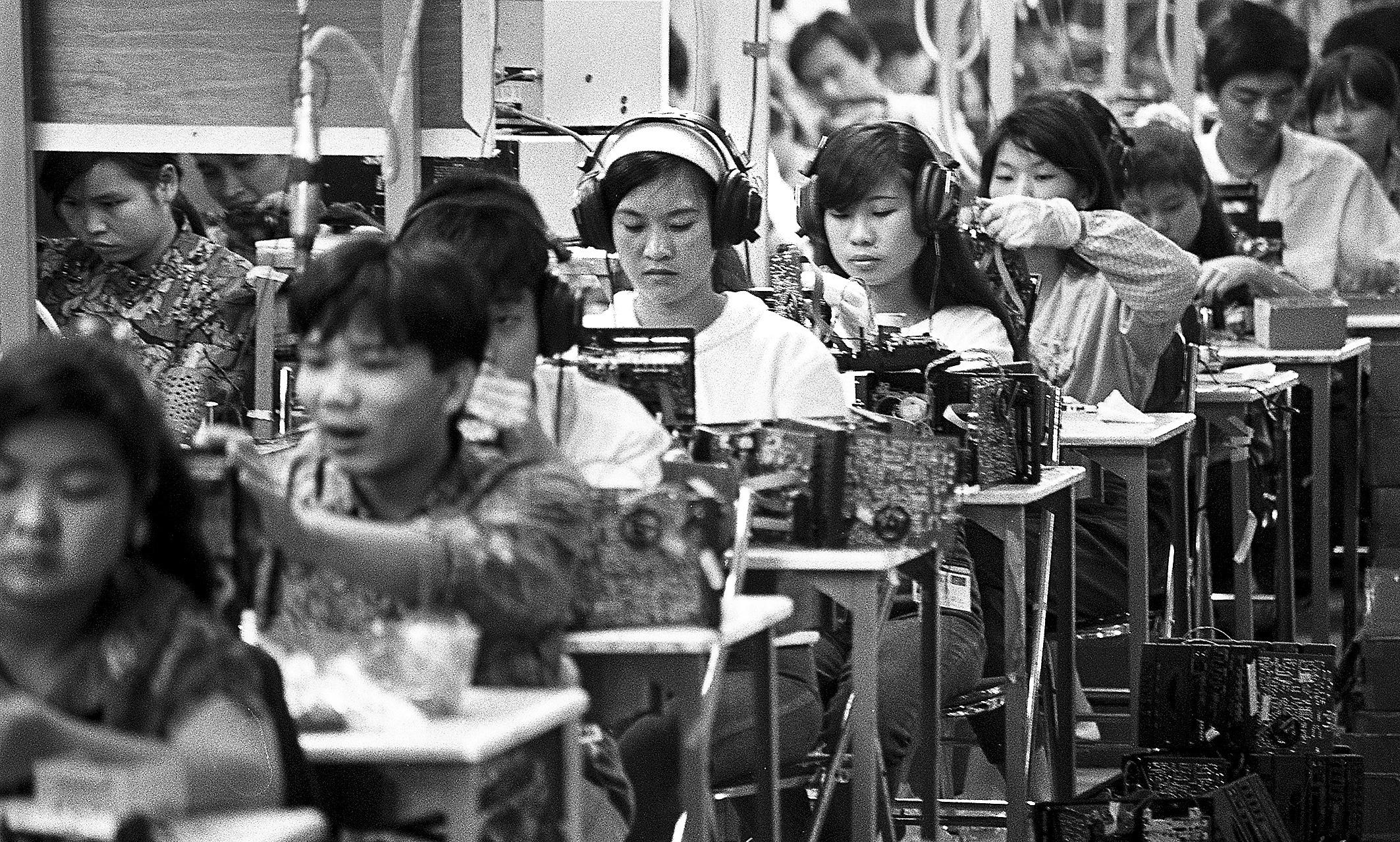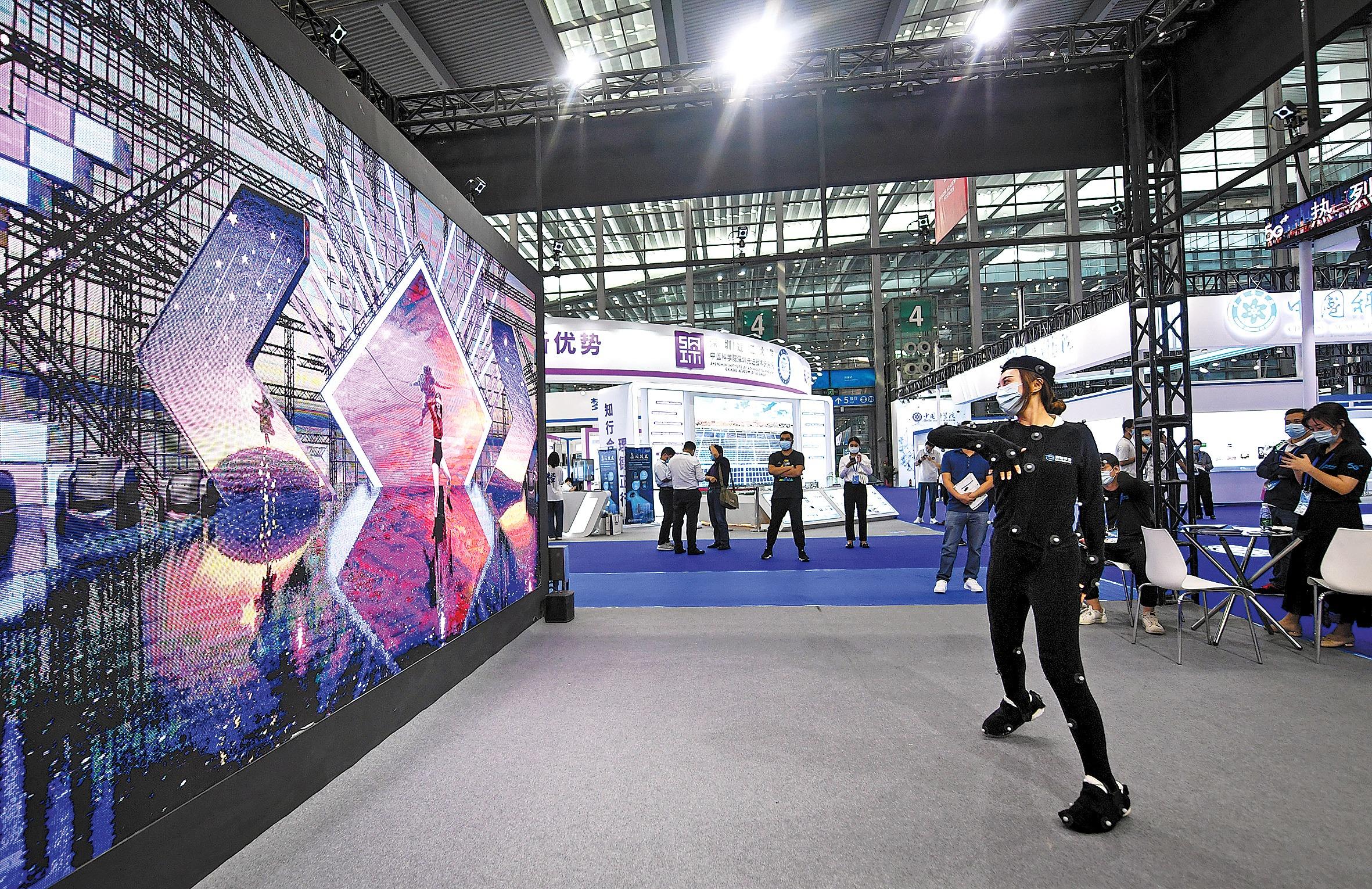Over 43 years, China’s pioneer of special economic zones has played a multifaceted role in nation’s transformation
 The Qianhai Special Economic Zone was established in Shenzhen, Guangdong province, in 2015 to deepen cooperation between the city and Hong Kong. (YANG FEIFAN / FOR CHINA DAILY)
The Qianhai Special Economic Zone was established in Shenzhen, Guangdong province, in 2015 to deepen cooperation between the city and Hong Kong. (YANG FEIFAN / FOR CHINA DAILY)
Zhong Zhenhua’s trip to Shenzhen, Guangdong province, more than 40 years ago was quite an eye-opener for him. Little did he realize how his journey would eventually lead him to the heart of China’s economic transformation.
“The energy and ambition I witnessed left an indelible mark on me. It was a wake-up call that inspired me to think bigger and aim higher in my pursuits,” said Zhong, 66, who owns an electronics trading company in the city.
In 1980, China was on the cusp of a new chapter in its history. Economic reforms were gradually sweeping across the nation, marking the end of decades of a planned economy and heralding the dawn of a new era of opportunity.
Zhong, a demobilized soldier from Hubei province, decided to venture into the unknown in Shenzhen, which at the time was a small fishing village poised to become a symbol of China’s modernization.
“Going to Shenzhen was, for many like me, searching for opportunities, a chance to see the outside world in this burgeoning landscape.”
On Aug 26, 1980, the 15th session of the Standing Committee of the Fifth National People’s Congress, China’s top legislature, approved the establishment of Special Economic Zones in Shenzhen, Zhuhai and Shantou in Guangdong, and Xiamen, Fujian province. Shenzhen was the first to launch such a zone, with the other three following in the next two years.
Zhong said arriving in Shenzhen was like stepping into a world of contradictions, as the dusty streets were home to glimmering fast-rising skyscrapers.
 An employee checks televisions for sale in Shenzhen in 1982. (PAN QIHUA / FOR CHINA DAILY)
An employee checks televisions for sale in Shenzhen in 1982. (PAN QIHUA / FOR CHINA DAILY)
Despite having limited resources, he tried his hand at different ventures, ranging from starting a small restaurant to engaging in electronics manufacturing. Despite initial setbacks, his willingness to adapt and keen eye for emerging trends allowed him to capitalize on changing market dynamics.
“People say we are all products of our time. I think I should really appreciate living at such a good time, because my career and I have grown together in the robust city of Shenzhen,” Zhong said.
Aug 26 marked the 43rd anniversary of Shenzhen being designated as China’s first SEZ. Over the years, the city has progressed from being a fishing village on the South China Sea coast into a modern metropolis comparable to cities such as Beijing, Shanghai and Guangzhou, capital of Guangdong.
Before becoming a SEZ, Shenzhen had only 330,000 residents in 1979, with a GDP of $131 million. Now, it ranks third on the list of Chinese cities with a GDP of over $481 billion a year, higher than that of countries such as Malaysia, Vietnam and South Africa.
Wei Jianzhang, vice-president of the Belt and Road Initiative’s International Cooperation and Development Research Institute in Shenzhen, said, “This city is a product of China’s exploration toward modernization. It is a catalyst for reform.”
Shenzhen has played a multifaceted role in China’s reform and opening-up. It has pioneered a market economy, experimented with economic and institutional opening-up, become a model for an unbalanced development strategy known as “letting some people get rich first”, and nurtured the SEZ spirit of reform and innovation, Wei said.
 Employees at Hong Kong-funded Xiufeng Electronics Co work in Shenzhen in 1993. (HUANG YIMING / CHINA DAILY)
Employees at Hong Kong-funded Xiufeng Electronics Co work in Shenzhen in 1993. (HUANG YIMING / CHINA DAILY)
SEZ status provided Shenzhen with preferential policies and incentives to attract foreign investment, and its proximity to Hong Kong played a significant role in Shenzhen’s early development by facilitating the transfer of knowledge, expertise and capital, propelling rapid industrialization and urbanization, Wei added.
When it was launched as a SEZ, Shenzhen introduced a number of unprecedented policies in China, including a project-bidding initiative in 1981, salary reform the following year, the issuance of the first stocks in China in 1983, and the introduction of temporary residence permits in 1985.
These policies helped end long-debated doubts over whether China should switch from being a planned economy to a market economy, and encouraged the central government to further open up and develop its entire eastern coastline.
It did not take long for Shenzhen’s economy to take off — its GDP reached 3.9 billion yuan ($535 million) in 1985, 14 times that of 1980.
Wei said that in addition to Shenzhen’s economic and institutional reforms, the city’s soft power should be highlighted, as Shenzhen encompasses a unique culture of reform and innovation centered on entrepreneurship, dedication and craftsmanship.
During a gathering in 2020 to celebrate the 40th anniversary of the Shenzhen SEZ, President Xi Jinping called for the city to build itself into a pilot zone for socialism with Chinese characteristics. He urged it to set an example for cities in a modern socialist country, increase its capabilities to implement the new development philosophy, build a new pattern to deepen all-around reform and expand opening-up on all fronts, and contribute to construction of the Guangdong-Hong Kong-Macao Greater Bay Area.
 Cyclists take a ride on the Shenzhen Bay coastal leisure belt greenway in April. Built beside the South China Sea, the greenway is a popular spot for cycling enthusiasts in the city. (PHOTO / XINHUA)
Cyclists take a ride on the Shenzhen Bay coastal leisure belt greenway in April. Built beside the South China Sea, the greenway is a popular spot for cycling enthusiasts in the city. (PHOTO / XINHUA)
Liu Qingbin, a former professor at Yokohama National University’s Institute of Advanced Sciences in Japan, said that today, Shenzhen is outstanding globally in key areas as China transitions from policy-driven opening-up to systemic opening-up, and from an export-driven economy to an open economy.
As it evolves, and with its reform advantages, the city aims to create a law-based, market-oriented international business environment, optimize market access, and dismantle barriers, Liu said.
Liu added that Shenzhen has a robust foundation in advanced manufacturing, together with an innovation hub propelling the Guangdong-Hong Kong-Macao Greater Bay Area. These advantages provide a complete innovation ecosystem, ranging from basic research to technological breakthroughs, industrialization, technology finance, and talent support.
Due to its innovative culture, Shenzhen saw 15,900 international PCT patent applications last year, accounting for 23 percent of China’s total, and ranking first nationwide in this respect for 19 consecutive years. A PCT patent application is a single application filed at an international receiving office that grants the applicant the right to file future national patent applications in any of the contracting states.
Meanwhile, the Shenzhen-Hong Kong-Guangzhou tech cluster secured second place globally in the 2022 Global Innovation Index report.
Shenzhen is also the undisputed champion for newly added specialized and sophisticated small and medium-sized enterprises (SMEs), in the latest evaluation by the Ministry of Industry and Information Technology in July. It topped the list with 310 additions.
The assessment is also known as the evaluation of the fifth group of specialized and sophisticated “little giant” companies.
 A staff member at a technology company in Shenzhen demonstrates an optical motion capture technique at the 24th China Hi-Tech Fair in Shenzhen in November. (PHOTO / XINHUA)
A staff member at a technology company in Shenzhen demonstrates an optical motion capture technique at the 24th China Hi-Tech Fair in Shenzhen in November. (PHOTO / XINHUA)
Statistics from big data analyzer Qizhidao showed that more than 25 percent of the 276 companies selected in the fourth group of national-level “little giant” enterprises in Shenzhen were involved in manufacturing highly innovative electronic equipment.
There are now 752 SMEs in Shenzhen, making the city a leading partner in niche markets.
Li Zibin, president of the China Association of Small and Medium Enterprises, said specialized and sophisticated SMEs producing unique products are becoming the cradle for new industries, fresh forms of business, and new models of industry. They are taking China’s manufacturing business toward higher-end, more intelligent and greener development.
Wei, from the Belt and Road Initiative’s International Cooperation and Development Research Institute, said it is imperative for Shenzhen to be a beacon for market economy reform. It should spearhead China’s “common prosperity” strategy and be a gateway for exploring the road to urban civilization and promoting the integration of Chinese culture with the world.
“First, Shenzhen must continue to be a good example of market economy reform. Then, it should contribute to solving unbalanced and insufficient regional development by accelerating the transfer of industries to surrounding areas and less developed areas,” Wei said.
“Regardless of the challenges that lie ahead, Shenzhen’s commitment to reform and opening-up remains unwavering.
“The city’s remarkable accomplishments are rooted in its profound respect for market forces and the government’s bold determination to persistently reform itself in support of private enterprise development,” Wei added.
“Shenzhen has achieved astonishing feats in the past and is poised to continue crafting extraordinary achievements.”


